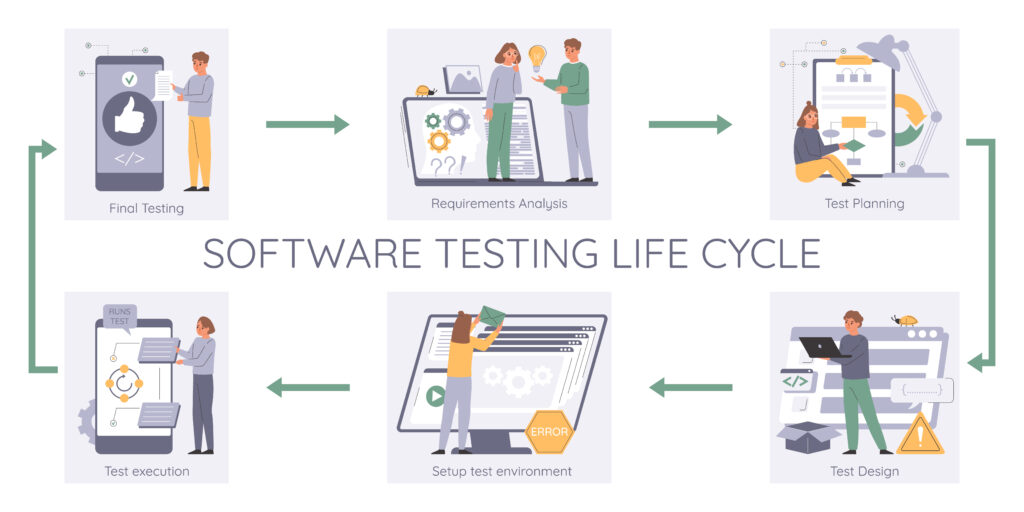What Functional Testing Really Means
Functional testing isn’t just a term—it’s a rigorous practice aimed at ensuring that every function of your software application behaves as specified in the design document. The importance of functional testing is amplified when you consider it as your last line of defense before your product hits the market. Its overarching objective is to validate that the application is built as per user requirements and functions correctly in mimicked real-world conditions. The procedure goes far beyond superficial checks, focusing intensely on meeting all functional requirements and satisfying end-user expectations.
Diving Deep into Types of Functional Tests
Testing a software application isn’t a one-step process; it’s a multi-layered approach, each layer having its unique focus and goal. At the most granular level, we have Unit Testing. Here, the smallest functional parts of an application, such as individual methods or functions, are isolated and scrutinized intensely. This ensures that each minuscule part performs as it is supposed to, leaving no room for ambiguity. As we move up, Integration Testing takes the stage. It explores how these individual units interact and integrate with each other, making sure they cohesively contribute to the application’s overall performance. At the pinnacle is System Testing. Unlike other types, it embraces the application in its entirety, confirming that it aligns well with the defined requirements and behaves as a fully integrated system.
Crafting Test Cases and Utilizing Test Data
The efficacy of functional testing heavily depends on well-crafted test cases and the data that feeds into them. A test case is a set of conditions meticulously designed based on user requirements, under which the application will be evaluated. These conditions detail out specific inputs, the expected outputs, and the criteria that decide whether a test is a success or failure. In parallel, test data is the input that is used within these test cases to probe the application’s behavior. It’s crucial to align this data as closely as possible with real-world scenarios, ensuring a comprehensive testing procedure that leaves no stone unturned.
The Revolution of Automation Frameworks
The importance of automation in functional testing cannot be overstated. Automation frameworks like Selenium, JUnit, and TestNG have revolutionized the testing landscape, making it more efficient, faster, and far less prone to human error. These frameworks excel at handling repetitive tasks, which are essential but time-consuming. This results in a significant reduction in testing time, freeing up the human resources to focus on more complex, judgment-based testing tasks. It ensures that you get the best of both worlds—automation for speed and consistency, and manual intervention for specialized scenarios.
Incorporating Functional Testing in Continuous Integration
Continuous Integration (CI) has changed the way we look at software development and quality assurance. It introduces a culture of regular code updates and rapid testing, making the identification and rectification of issues far more efficient. Functional tests play an integral role in this paradigm shift, serving as continual checks that new code changes do not break existing features. Thus, the inclusion of functional testing within the CI pipeline amplifies its potential, ensuring a smoother, more reliable software development lifecycle.
Essential Best Practices
A successful functional testing strategy is built on a few key best practices. Understanding the precise requirements ensures the testing focus remains accurate. It also involves incorporating various real-world scenarios in the test cases to certify the application’s robustness and reliability. Furthermore, creating open channels of communication between development and testing teams can foster a more collaborative and effective testing environment. When all these elements come together, the result is a more holistic, effective functional testing strategy.
Wrapping It Up
Functional testing is not just another item on your software development checklist; it is a critical element that ensures the quality, reliability, and user-friendliness of your application. It’s an exhaustive process involving multiple layers of evaluation, each with its focus and objective, right from the unit level to the complete system. By leveraging well-crafted test cases, precise test data, and state-of-the-art automation frameworks, organizations can push the boundaries of what’s possible in software quality assurance. The incorporation of functional testing into Continuous Integration workflows further boosts its efficacy. Whether you’re a budding startup or a seasoned enterprise, making functional testing an integral part of your software development process is not an option—it’s a necessity.





